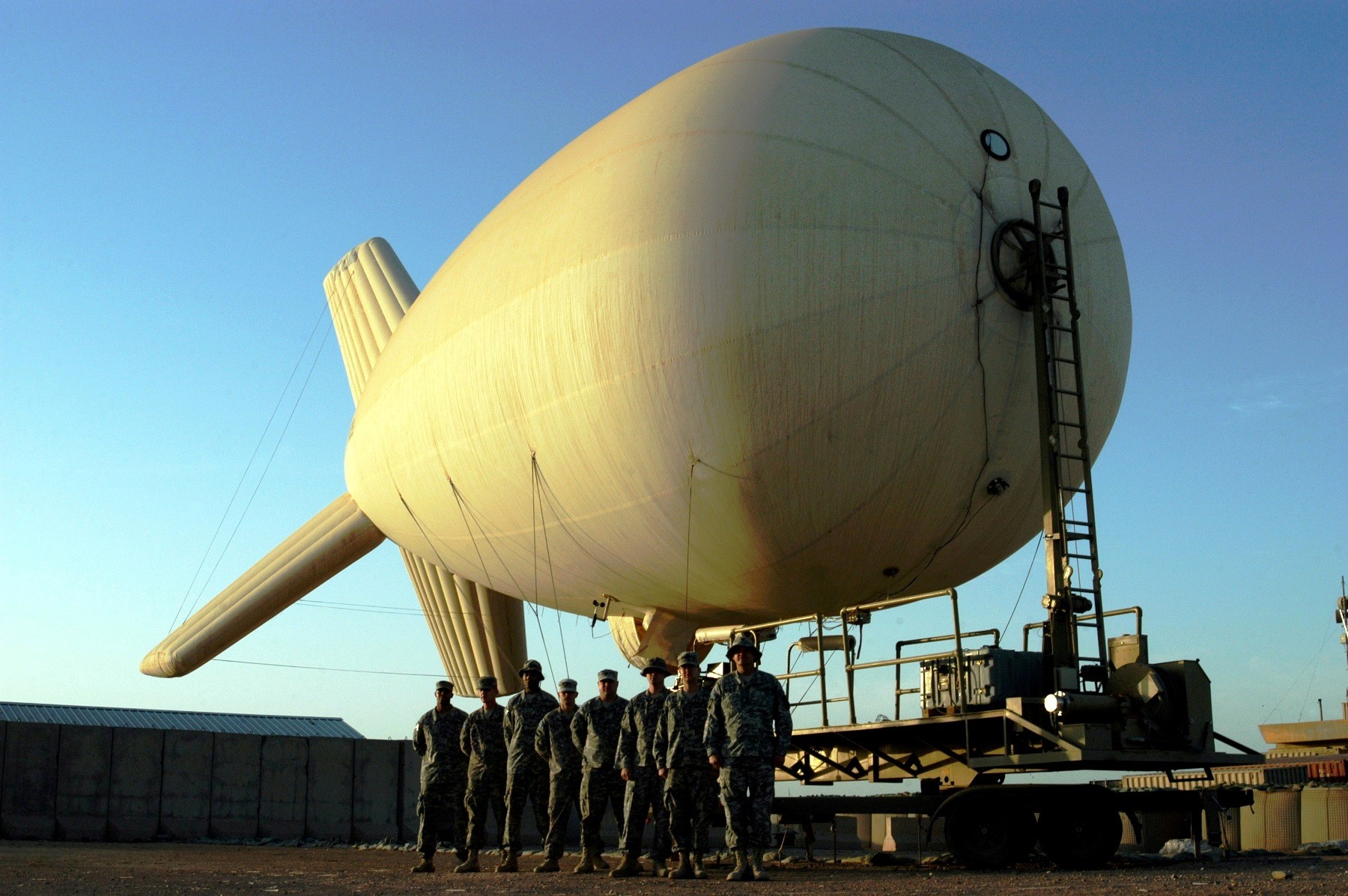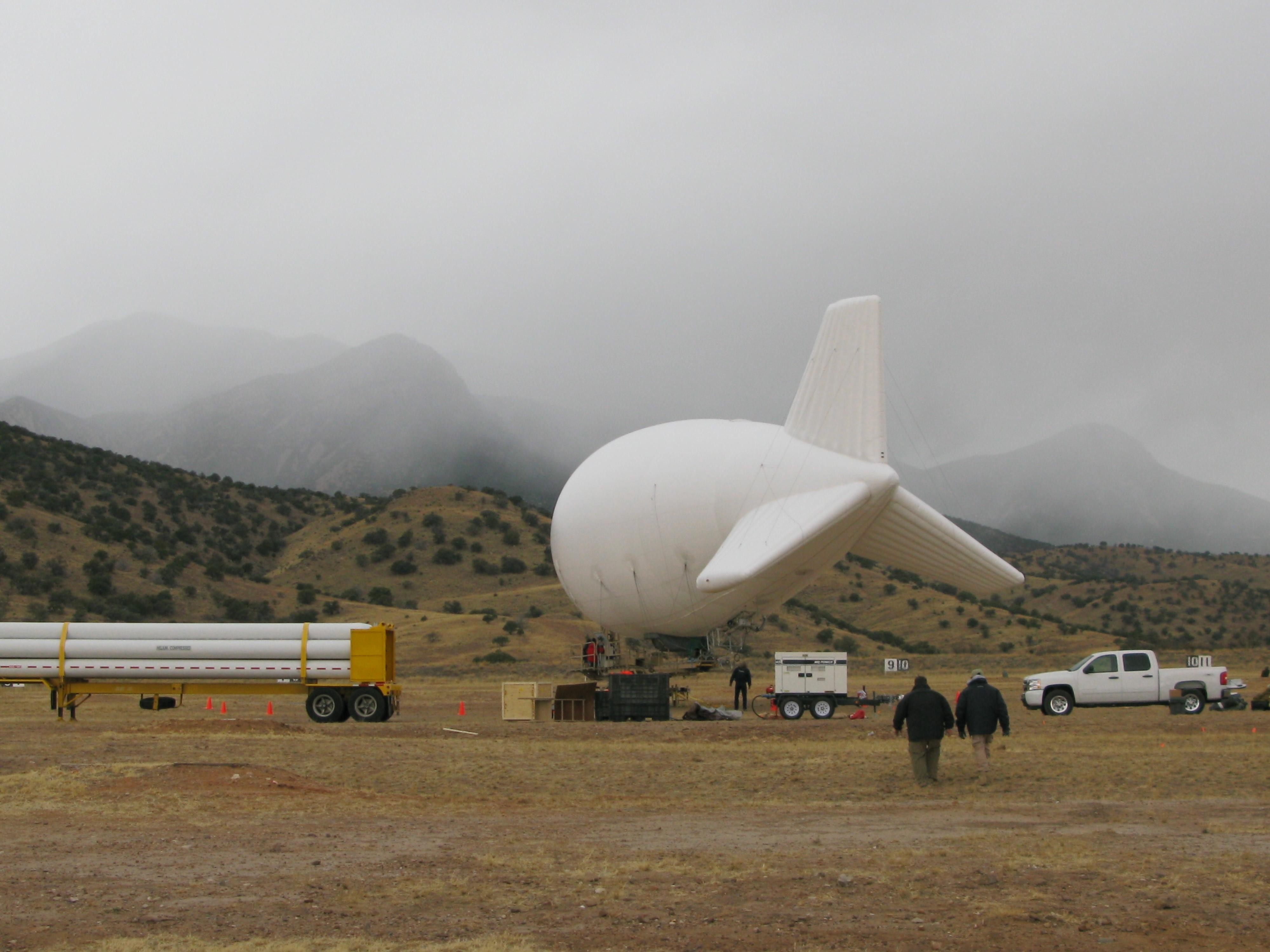Military Aerostat - "If we can continue to grow and succeed with the JLENS event, the future could be bright for rovers, balloons and aeronautics," said Tom Karako of the Center for Strategic and International Studies. | Patrick Semansky/AP Photo The Aerostat houses payloads in several places under its body.
The PTDS is connected to the docking platform via a robust link, which carries copper wires and fiber optic cables to provide power and communications to and from the Aerostat's payloads. Given this wide variety of platforms and components, we summarize here the key issues and factors that differentiate the various aerostat systems - Summary of a Beginner's Guide to the World of Aerostats.
Military Aerostat
 Source: www.asianmilitaryreview.com
Source: www.asianmilitaryreview.com
For a longer version of this guide, with details on each component, please see the main post below. The Stratospheric Covert Long-Dwell Architecture (COLD STAR), a project designed to track drug traffickers, was widely reported in 2019. At the time, the Pentagon launched 25 observation balloons from South Dakota as part of a demonstration.
An/Zpy- Starlite Radar Of The Ptds
An aerostat is a vehicle that rises using a buoyant gas, such as helium or hydrogen, and is therefore lighter than air. All field operational systems known today use helium as their main "booster" gas (it is non-flammable, considered safer than hydrogen).
Additionally, aerostat systems vary widely in quality, durability, simplicity, size, and carrying capacity, creating a variety of payloads, coverage, operation, and costs. The DoD is also working to use drones equipped with "stratospheric payloads" along with balloons to track moving targets on the ground, deliver communications and intercept electronic signals.
The idea is to transfer the technology to the US Army and Special Operations Command, according to budget documents. The PTDS also carries the AN/ZPY-1 STARLite radar from Northrop Grumman. It's a small tactical radar that weighs just over 65 pounds.
It acts as a synthetic aperture radar (SAR) that sends a map of the area to the ground station for analysis and mission planning. Other communications configurations include Advanced Antennas for Radio Communications (HARC), PRC-117G, Tactical Target Network Technology (TTNT), High Band Network Radio (HNR), Weather Agency Weather Broadcast Sets
 Source: api.army.mil
Source: api.army.mil
Persistent Threat Detection System Performance
of the Air Force (AFWA) and the Mini Tactical Joint Broadcast Data Link (M-TCDL). The ground control station receives full-motion video from the system and distributes it to the theater network via a web portal. The PTDS can be operated by a crew of five.
Data from the PTDS is distributed to ground-based commanders through the Army's Ground Joint Distribution System (DCGS-A). Aerostats have proven to be a valuable reconnaissance tool, gathering information from 100 miles in any direction, 24 hours a day, for weeks, thwarting everything from planting IEDs in remote locations to robbing police officers.
afghan. money from civilians at illegal checkpoints. "They can be trucks for any number of platforms, whether it's communication nodes and data links, ISR, air and missile threat tracking, or even various weapons — and without the predictable orbits of the satellites," Karako said.
e. Operating Altitude: Operating Altitude is the height "above ground" at which the system is expected to operate while carrying the specified load. The lift, and therefore the operating height, can vary with external conditions, such as air pressure, and operators can lift the system to different heights within the system's limits.
Wescam Mx- Payload
h. Communications: The main communications system transmits data from the air unit and payload to a ground station and operator and commands from the operator back to the payload. Some systems have secondary communication systems to transmit/receive data to and from external sources.
Russia began developing hypersonic weapons in response to the US withdrawal from the Anti-Ballistic Missile Treaty in 2002. The Russian government claimed it would launch a hypersonic missile in an attack on Ukraine in March, which was used for the first time in combat.
 Source: api.army.mil
Source: api.army.mil
. When considering the use of an aerostat for storage applications, teams should investigate a variety of systems (different designs, sizes, mobile and fixed) related to their mission, especially in the intended area of operation. Aerostats range from small systems flown at altitudes of less than 100 m (300 ft), carrying payloads under 1 kg for short ranges, to heavy long-range systems lifted up to thousands of meters, carrying
large loads over 20 kg with longer vision or communication. The price depends on the size, quality, and reliability of the system, which you'll want to choose based on the intended mission for the aerostat (How long will the communication sensor range? How long will it take to understand with
Not Your Average Balloon
infrared camera? How tough should it be, given the weather and terrain?). Therefore, your mission should guide selection, the need to balance quality and cost. Any estimate of the cost of operating a particular system must take a long-term perspective and include the training required, the number of crews, initial deployment, life expectancy, normal logistics requirements, the necessary helium supply, power supply and calculations
other logistics costs. (eg vehicles and fuel required). Aerostat advantages: They provide continuous and often preventive surveillance, and offer stability, high reliability, simple operation and straightforward maintenance; they can be used every day, and some models are portable.
Tethered balloons, which are more common than untethered versions, enable 24/7 aerial views creating a visual barrier to illegal activity. But in 2003, Lockheed Martin engineers began updating the envelopes of existing sea aerostats with durable new materials that could achieve liftoff while carrying larger payloads of sensors, cameras and audio equipment.
The new arrays—clad in a combination of copper wire and fiber-optic cables—transmitted data to a ground control station, which then relayed near-real-time information about hostile activity to operating forces. c. Size/Volume: The size of the balloon, usually expressed as its radius in round systems or its length and width in fish-shaped systems, is a simple way of estimating its gas volume capacity and thus
 Source: www.baltimoresun.com
Source: www.baltimoresun.com
Hiding In Plain Sight
the ability of the lifting platform, cables. , support. gear and load at its operating height. c. Size/Volume: The size of the aerostat, and thus its relative gas volume capacity, determines its ability to lift the platform, cables, support equipment and payload to its operating altitude.
Size matters – larger systems tend to carry heavier payloads (read: better, longer range) and stay airborne for longer periods of time and in more challenging weather conditions than smaller ones. As you might expect, this greater capacity typically requires heavier, more complex support structures, more manpower, and more power and helium.
Balloons can complement the work done by traditional aircraft and satellites, and stratospheric balloons can be built and launched at a fraction of the cost and time. For example, the cost of launching and operating balloons for weeks or months is in the hundreds of thousands of dollars, compared to the millions—or tens of millions—needed to launch and operate aircraft or satellites.
d. Load "Carrying Capacity": The weight the balloon can lift on itself and its string is its load carrying capacity. It refers to the "operational" payload, such as a camera, and the support systems that must be in the air with it (eg power, communications, computers, lights, etc.).
p. Attached/Unattached: The tether is a specialized cable that anchors and connects the balloon to an anchor unit on the ground. Depending on the size and design, the systems can be attached to a fixed base, a mobile unit (on a vehicle) or can be completely detached as a flying aircraft.
The links can be roughly divided into two main types: the 35 m long PTDS can operate for 20 continuous days and can carry a load of 500 kg, while operating at an altitude of 1500 m.
/arc-anglerfish-arc2-prod-mco.s3.amazonaws.com/public/7QZX6OR7B5B3PDWOQBQ2CCXHKQ.jpg) Source: www.armytimes.com
Source: www.armytimes.com
The PTDS radar can scan over the 160 km horizon. PTDS can withstand strong winds and provide high stability. The Government of Iraq has requested the sale, installation, spare parts and repairs of 7 Aerostat Initial Deployment (RAID) tower systems and 7 Aerostats (17 meters) and 14 Rapid Deployment Tower Systems (RAID), publications and data
technical, field surveys, US Government and contractor. technical assistance, personnel training and training equipment, and other program-related aspects and logistical support. The estimated cost is $90 million. Beginning in 2015, the Army conducted a three-year exercise to determine whether to proceed with the purchase of JLENS blimps from Raytheon.
But the plane broke away from its docking station near Baltimore, flying for three hours and eventually landing near Moreland Township, Penn. Because of the success of the PTDS helostats, Lockheed-Martin is developing a Long Altitude Endurance Demonstrator (HALE-D), which seeks to hover, untethered, at 60,000 to 70,000 feet.
Used in conjunction with satellites and low-flying surveillance aircraft, these aerostats will provide multi-layered surveillance capabilities, enhancing situational awareness in theaters of war and protecting US and allied forces around the globe. The PTDS carries an MX-20 payload supplied by the L-3 Wescam.
The MX-20 is an ultra-long-range, multi-sensor, multi-spectrum imaging and targeting system. It can carry up to seven sensors at the same time, from which the operator can choose the best one according to the conditions. The balloons are made by Raven Aerostar, a division of Raven Industries.
Raven said they consist of a flight control unit powered by batteries charged using renewable solar panels. They also have an electronic payload package that controls flight safety, navigation and communications, Russell Van Der Werff, director of engineering at Raven Aerostar, said in an interview.
 Source: www.ainonline.com
Source: www.ainonline.com
The aircraft was tethered, unlike high-altitude balloons, and was designed to track boats, land vehicles, drones and cruise missiles. The balloons now used by the DoD are smaller, lighter and can fly much higher than spies.
The US Army awarded a $305.7 million contract to Bravura Information Technology Systems to operate, maintain and support Aerostats under the Persistent Surveillance Systems – Tethered (PSS-T) program in September 2016. PTDS and Persistent Ground Surveillance System
(PGSS) skills will be accumulated within the program. Teams evaluating aerostats must balance quality and cost. The intended mission for the system must define the quality required and a long-term perspective must be taken in any assessment of a given system's operating cost and required training, number of personnel, initial deployment, lifetime, including normal logistics.
requirements in the calculation. , the necessary helium supply, electricity supply, among others. Balloon Disadvantages and Costs: Balloons are not as durable as towers and are not cheap. The initial cost varies widely within and between manufacturers and models, ranging from $50,000 to $5 million for a complete system.
The cost of a mid-range system (~$200,000) is high for most conservation agencies. Larger, higher quality systems may require significant user training, logistical coordination, or air traffic control clearance and may be restricted by ITAR. WASHINGTON, May 13, 2014 - The State Department has decided to approve a foreign military sale to Iraq of Aerostat and Rapid Deployment Tower Systems and related equipment, parts, training and logistics support at an estimated cost of $90 million.
dollars. The Defense Security Cooperation Agency submitted the necessary certification notifying Congress of this potential sale on May 13, 2014. For years, the DoD has conducted tests using high-altitude balloons and solar-powered drones to gather data.
. , providing communications with ground forces and to mitigate satellite problems. The Pentagon is quietly handing over balloon projects to military services to collect data and transmit information to aircraft, POLITICO found in DoD budget justification documents.
ptds aerostat, aerostat camera, lockheed martin aerostat, tethered balloons aerostat, 74k aerostat system, pd aerostats operations, tars aerostat, psst aerostat